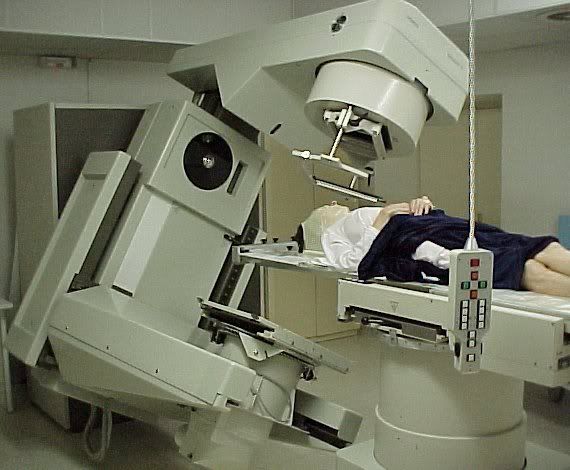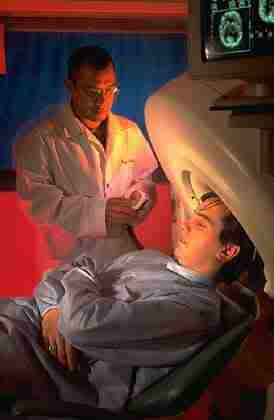Experience of Fatigue in Adolescents Living With Cancer.
Adolescence is a critical period in terms of educational, social, and career development, as well as being a time of rapid physiological and emotional change. It is a developmental period that can be profoundly impacted by the diagnosis and treatment of cancer. Further, there is some evidence to suggest that cancer diagnosed and treated during childhood can impact on later development and adolescence. The array of symptoms and side effects resulting from the disease and its treatment cause both short- and long-term physical, psychological, and psychosocial effects. In order for adolescents to be cared for effectively, healthcare professionals must have a comprehensive knowledge concerning all cancer-related symptoms that patients experience. Poor symptom management can result in considerable distress that can adversely affect quality of life.
Although there is some discussion in the literature regarding short- and long-term effects of cancer treatment, limited attention has been given to the symptom of fatigue. Subsequently, there is insufficient understanding of its occurrence and consequences in adolescents during and after treatment of cancer.
Background
The needs of adolescents with cancer have not been fully recognized. This is because research has tended to focus on the process of psychological adjustment to the disease, and relatively little research effort has been directed to studying trajectories of physical symptoms. However, it is suggested that increased symptom severity in adolescents is associated with greater anxiety and depression, lower self-esteem, and behavioral problems. One symptom that causes considerable distress in adults with cancer is fatigue, but this symptom has not been researched extensively in adolescents. Research into cancer-related fatigue in adults reveals it to be "a subjective, unpleasant symptom, which incorporates total body feelings ranging from tiredness to exhaustion creating an unrelenting overall condition, which interferes with individuals' ability to function.". This definition, derived by concept analysis, provides a clear portrayal of fatigue that might also be pertinent for adolescents. However, because children and young people rarely share adult views on the world, they may have different perceptions of illnesses such as cancer and its associated symptoms.
Lack of research into fatigue in pediatric oncology does not mean that this symptom has not been bothersome. Adolescents in 2 longitudinal studies conducted during the late 1990s rated fatigue as one of the most distressing of 10 treatment-related symptoms. More recently, 2 qualitative research studies have provided insights into adolescents' experiences of cancer-related fatigue. Descriptions generated by these explorations depict young people being "wiped out," feeling "totally exhausted," and "living life in a state of limbo." Further understanding of what such feelings mean in the context of adolescents' daily lives are provided by 2 programs of research, one being undertaken in the USA and the other in the Netherlands.
In the USA, focus groups were undertaken to enable children (aged 7-12 years) and adolescents (aged 13-16 years) with cancer to convey their experiences of fatigue and explore perceptions of its causes. The descriptions they provided varied, according to the participants' developmental levels. As might be expected, the adolescents used a larger vocabulary to describe their feelings and discriminated between mental and physical fatigue. Both age groups expressed fatigue in terms of physical activities they could no longer participate in and expressed emotions including feeling sad, mad, and sorry for themselves. Fatigue fluctuated in both age groups from being acute in some instances to being episodic or chronic in others.
Multiple reasons for being fatigued were cited, many of which are reported in the adult literature-chemotherapy, disturbed sleep, being too active, and treatment side effects. In addition, the adolescent group mentioned that worrying about the future also contributed to their feeling fatigued. However, although these qualitative studies have provided valuable insights into the experience of fatigue in children and adolescents with cancer, they have not determined its impact on everyday functioning.
In the Netherlands, research is being undertaken to study fatigue in young adult survivors of childhood cancer. An initial survey (n = 455) found that 18% of survivors of childhood cancer experienced extreme tiredness long after treatment has finished. From ensuing interviews with those reporting extreme tiredness, the researchers found that despite informants having an average of 9 hours sleep per night, fatigue was still felt upon awakening. It had a negative impact on quality of life as it hindered performance of day-to-day tasks and prevented social activity. However, a second study of 416 survivors generated conflicting findings. The later study suggested that young adult survivors experienced a level of fatigue more or less the same as that "normally" experienced by persons of the same age who had not had cancer. These contradictory findings suggest that further research is needed to clarify the persistence and consequences of fatigue over time.
A further issue that has been debated within the pediatric literature relates to the optimal way to collect information from adolescents. Computerized questionnaires and diaries are being developed to collect health behavior and symptom data from this group. Initial evaluations suggest that electronic methods may impact favorably on compliance, accuracy, and acceptability. However, as these have not been trialled in adolescents living with cancer, it is not possible to surmise their utility for research with such populations. This study provided opportunity not only to investigate the symptom of fatigue and its impact on adolescents living with cancer but also to explore the feasibility of computerized approaches to collecting data.
Discussion
This study was a small-scale exploration of the quality of life and fatigue experienced by adolescents who were currently having, or who had previously received, treatment of cancer. Small convenience samples of 8 adolescents on treatment, 6 that were 1 to 2 years off treatment, and 8 adolescents having follow-up (over 5 years posttreatment) were studied.
The diary and complementary interview data provided detailed descriptions of the fatigue experienced by adolescents that participated. Fatigue and disruption to daily activities were most prevalent in the on-treatment group. However, despite the passage of time after treatment, some adolescents experienced levels of fatigue that prevented them engaging in pastimes enjoyed by their peers. These people were in the minority, but it is concerning that some people 5 years after completing treatment reported levels of fatigue and disruption higher than those of adolescents 1 to 2 years off treatment, and in some instances, this approached levels reported by individuals on treatment. It is possible that those in the follow-up group elected to take part in the study because they experienced fatigue and difficulties in their daily lives. Thus, they may not be reflective of all receiving follow-up. This should be borne in mind when considering the findings. Further, it is important to consider the age at which this group had treatment. Most were early adolescents when participating in the study, but could have been young school children when initially treated. Again, we cannot infer from this study whether the age at which individuals initially have treatment impacts on latter fatigue and compromised functioning.
Further, it could be argued that the relatively high levels of fatigue and disruption to activities reported by the follow-up group relative to those in early remission may reflect their higher expectations. It would be unsurprising if they had higher hopes and expectations of their capacity and functioning than those whose treatment had finished more recently. It is possible that those 1 to 2 years and over 5 years posttreatment had similar energy reserves, but that those further from treatment found these less acceptable and more distressing as their expectations were dashed as they struggled to do all they wished.
Furthermore, some adolescents seemed to find reintegration into daily life after treatment and reestablishment of relationships with their peers problematic. This concurs with previous research that also indicates that some individuals are unable to reintegrate or meet usual milestones in life. What remains unclear is the role of fatigue in relation to these shortfalls. It is plausible that insufficient energy reserves make socializing and meeting milestones beyond their perceived capacity. Equally, some individuals' latter difficulties with fully participating in everyday and desired activities could result from enduring psychosocial, physical, or physiological effects of having undergone cancer treatment at a particularly complex developmental stage.
Although high levels of fatigue were reported at times during this study, they did not necessarily equate with similarly high levels of distress. This anomaly has been noted in adult populations and suggests either that this symptom is not especially distressing or that individuals generally adapt to living with it over time. Qualitative studies of the nature of fatigue describe a response shift that arises when individuals grow accustomed to fatigue and modify their activities to accommodate it. Breetvelt and Van Dam have proposed a theoretical explanation for response shift that suggests that with time, patients become accustomed to changes in their health status and finally accept them as normal. Thus, it would seem that individuals' experiences and interpretations of fatigue are subjective and may vary with exposure to this symptom.
Furthermore, cancer treatments vary in intensity and effect and impact differently on body image and functioning. Sarcomas represent a fair proportion of childhood and adolescent cancers. Their treatment may require amputation-a procedure that may impact greatly on mobility, body image, energy levels, activity and self-confidence over the medium- to long-term. Other treatments, notably some types of chemotherapy, may result in long-term organ damage. For example, some antitumor antibiotics can cause cardiomyopathy and pulmonary fibrosis, and cranial radiation may cause endocrinopathies that cause fatigue. Currently, insufficient research has been conducted into the differential effects of different treatments administered to children and adolescents with cancer.
It is recognized that healthy adolescents experience sleep deprivation and tiredness. This study did not collect data from a group of healthy adolescents. Had one been included, the research team may have been well placed to commence distinguishing between fatigue reported by those living with cancer as distinct from feelings of tiredness experienced by healthy adolescents.
As regards the process of data collection, few individuals used the electronic facility. Given the general aptitude for computer use in young individuals and previous evidence suggesting popularity among adolescents for computer-assisted methods of collecting health information, this was unexpected. One explanation for this may relate to individuals feeling too tired to turn on their computers or focus on a screen. The barriers and facilitators to the use of computers for data collection in adolescent and other populations merit further investigation.
Conclusion
This small-scale study generated some interesting data concerning the short- and longer-term effects of treatment of cancer in adolescence. However, these should be viewed in the light of some shortcomings. The samples participating in the study were small. Thus, the findings themselves and interpretations put forward in the discussion should be treated with caution, as the representation of these samples cannot be assured. Further, data were only collected for a period of 1 week and may not be typical or represent their overall fatigue. In addition, the diary was a newly developed instrument, and its psychometric properties have yet to be established. That aside, triangulation of data with the interviews supported and lent credence to entries recorded in the diary. To this extent, the diary seemed to generate valid records. The findings from this study suggest that fatigue may be an important factor affecting well-being in adolescents during and after treatment of cancer and one that warrants further research.




0 Comments:
Post a Comment
<< Home